Planning on climbing Mount Fuji? Discover the main hiking trails, gear recommendations, safety tips, and when to go for the best experience. Perfect for first-time hikers and seasoned adventurers alike.
Table of Contents
Japan’s highest peak and a symbol of the nation
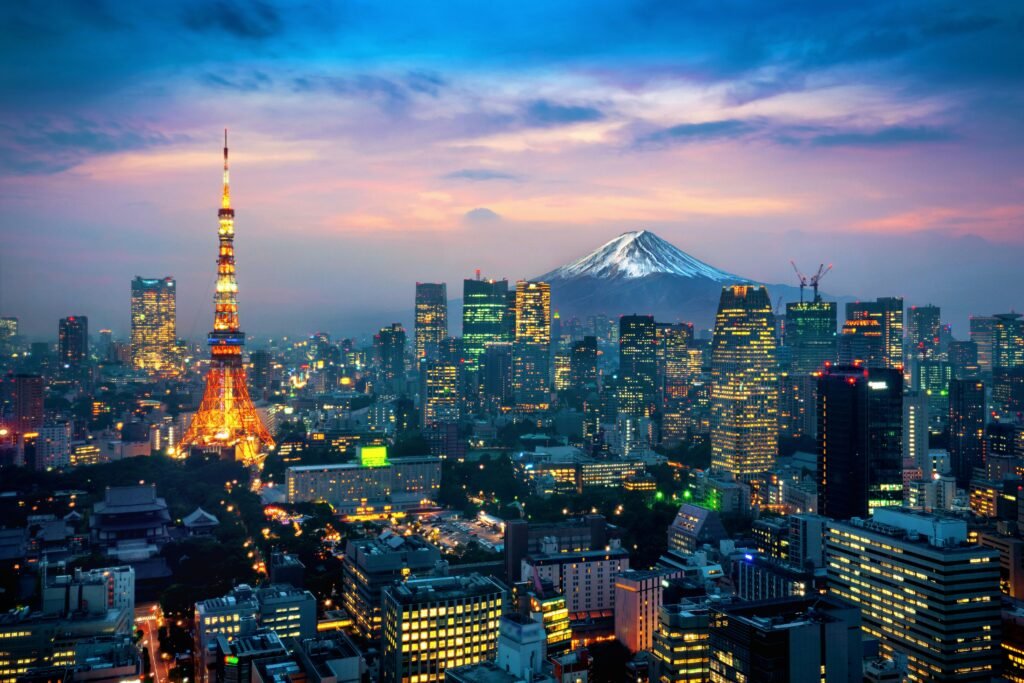
Mount Fuji , a UNESCO World Heritage Site, is Japan’s highest peak, rising to an impressive 3,776 meters. It is located on the island of Honshu, about 100 kilometers from Tokyo, making it a popular destination for hikers and travelers from around the world who pass through the Japanese capital. But this still-active volcano, despite being dormant since its last major eruption in 1707, represents much more to the Japanese than just a volcano to climb: it is considered a symbol of the nation and has been celebrated in Japanese art, literature, and culture for centuries. Its perfectly conical and iconic cone, often capped with a blanket of snow, is the perfect symbol.
How to get to Mount Fuji
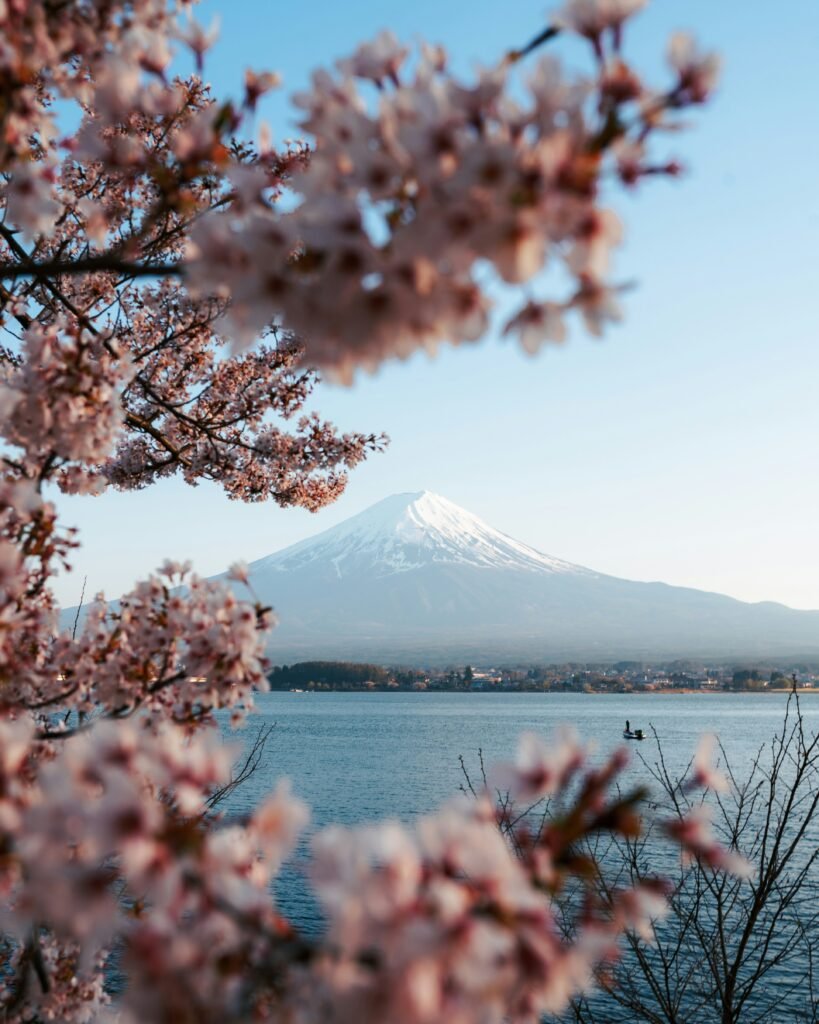
Before you start climbing Mount Fuji , you have to get there! There are several possible routes from Tokyo and you must choose according to the hiking trail you choose to climb.
There are 4 possible hikes with varying starting points for climbing Mount Fuji (we will detail them a little further down):
- the Yoshida Trail (the best known and easiest),
- the Subashiri Trail ,
- the Gotemba Trail
- the Fujinomiya Trail .
To put it simply, even if it may seem a little complicated, here is how to get to Mount Fuji from Tokyo according to the different hiking trails:
- Yoshida Trail : First option: From Shinjuku Station, take a Keio Line train to Otsuki Station, then transfer to the Fujikyuko Line to Kawaguchiko Station or Fujisan Station. From either station, you can take a local bus to Yoshida Trail Station 5. Second option: Take a direct bus from Shinjuku.
- Gotemba Trail : From Tokyo Station, take the JR Tokaido Line to Kozu Station, then transfer to the Odakyu Line to reach Gotemba Station. From Gotemba Station, you can take a bus to the 5th station of the Gotemba Trail .
- Fujinomiya Trail : From Tokyo Station, take the JR Tokaido Line train to Shinfuji Station, then take a bus to Fujinomiya Station. From there, a bus will take you to the 5th station of the Fujinomiya Trail .
- Subashiri Trail : From Tokyo Station, take the JR Tokaido Line train to Shin-Fuji Station, then take a Fujikyu Shonan Bus company bus to the 5th station of the Subashiri Trail .
These routes are not fully covered by the JR pass and we recommend you go through the HyperDia website to check the timetables and plan your trips precisely! If you are wondering how to travel with a JR pass in Japan , you can read our article below!
HOW TO TRAVEL IN JAPAN WITH A JR PASS ?
Climbing Mount Fuji: the different hiking trails
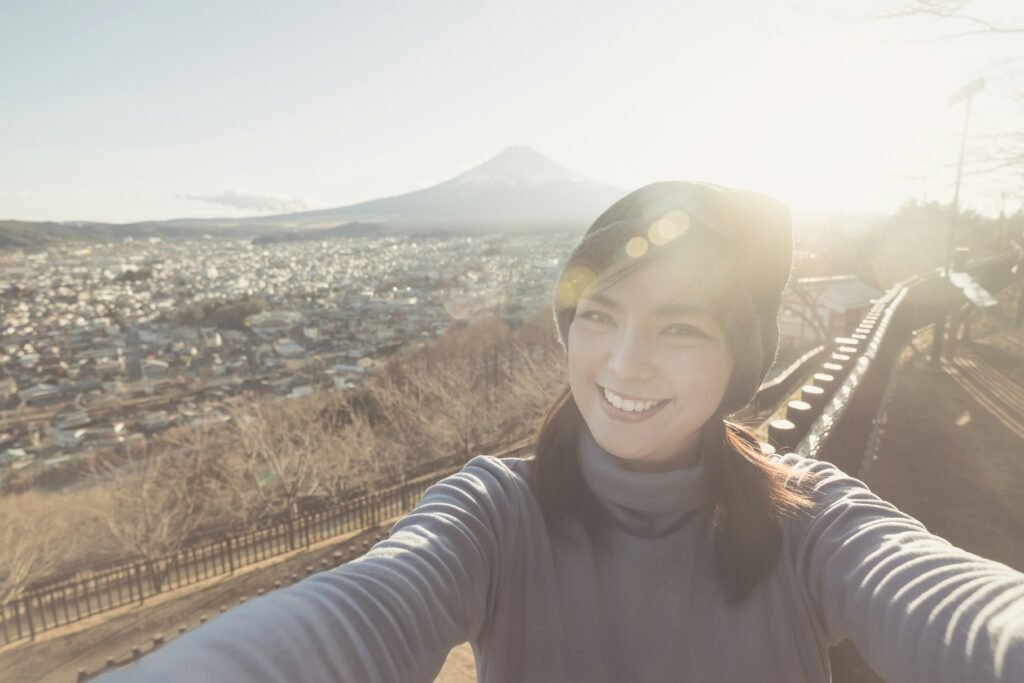
As mentioned above, climbing Mount Fuji offers several routes, each with its own unique characteristics. The route you choose depends on your preferences in terms of elevation gain, crowds, and duration. Here’s an overview of the most commonly used trails:
The Yoshida Trail : the most popular and best-known route, it is also generally the easiest to access.
- Elevation gain: approximately 1,500m
- Duration of the climb: between 6 and 8 hours
- Duration of the descent: between 3 and 4 hours
The Gotemba Trail : this is the toughest trail with the greatest elevation gain and is a real sporting challenge!
- Elevation gain: approximately 2,400m
- Duration of the climb: between 7 and 9 hours
- Duration of the descent: between 4 and 5 hours
The Fujinomiya Trail : a route that runs along the southern slope of Mount Fuji, it is also easily accessible from Tokyo and offers a good alternative to the Yoshida Trail.
- Elevation gain: approximately 1,400m
- Duration of the climb: between 4 and 6 hours
- Duration of the descent: between 2 and 3 hours
The Subashiri Trail : Although the elevation gain is greater, it does not take much longer than the Yoshida Trail and even joins it from the 9th station.
- Elevation gain: approximately 1,800m
- Duration of the climb: between 5 and 7 hours
- Duration of the descent: between 2 and 3 hours
This climb is therefore not to be taken lightly and the descent should not be underestimated, which is quite long and puts a lot of strain on the knees on crumbly and somewhat slippery ground. The total duration of the ascent of Mount Fuji can therefore easily take between 10 and 13 hours.
Watch the sunrise from the top of Mount Fuji
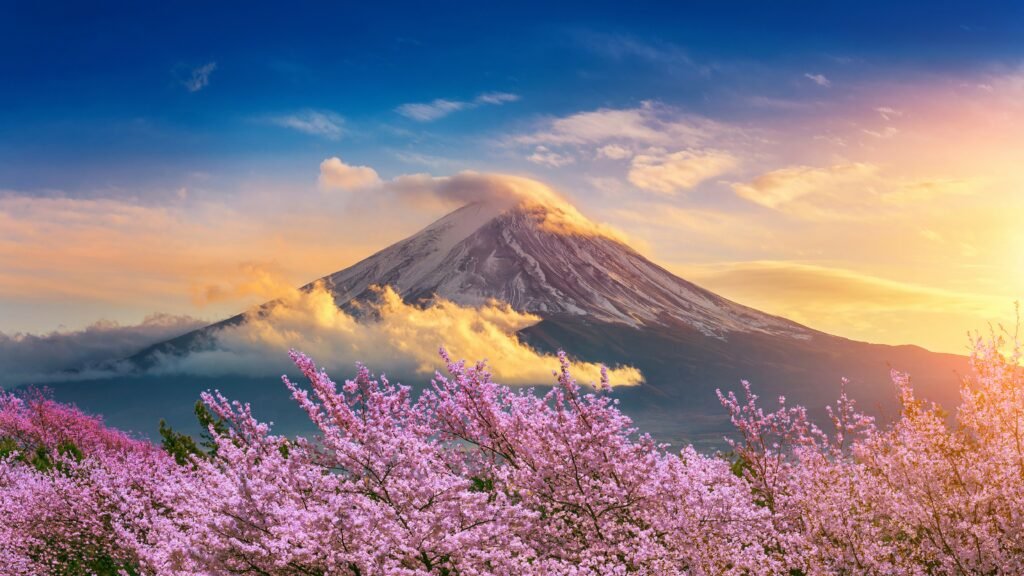
To climb Mount Fuji , you have several options:
- Leave early in the morning and make the round trip during the day to return to the starting point in the early evening
- Leave in the morning to arrive at sunset and then sleep in one of the refuges at the stations before finishing the descent the next day when it is light: we do not recommend this option because the night descent can be quite dangerous, even to reach a refuge.
- Leave early in the evening to reach one of the refuges at the stations to spend the night there, then leave early in the morning to see the sunrise.
- Leaving late in the evening and climbing at night without a break in order to see the sunrise: this is the option we chose and it works very well!
Keep in mind that many people climb Mount Fuji at night to admire the magnificent sunrise over Tokyo Bay , so you’ll have company on the various hiking trails. At the various stations, you’ll have the option of sleeping, eating, or even having a coffee!
Sleeping in a mountain hut while climbing Mount Fuji
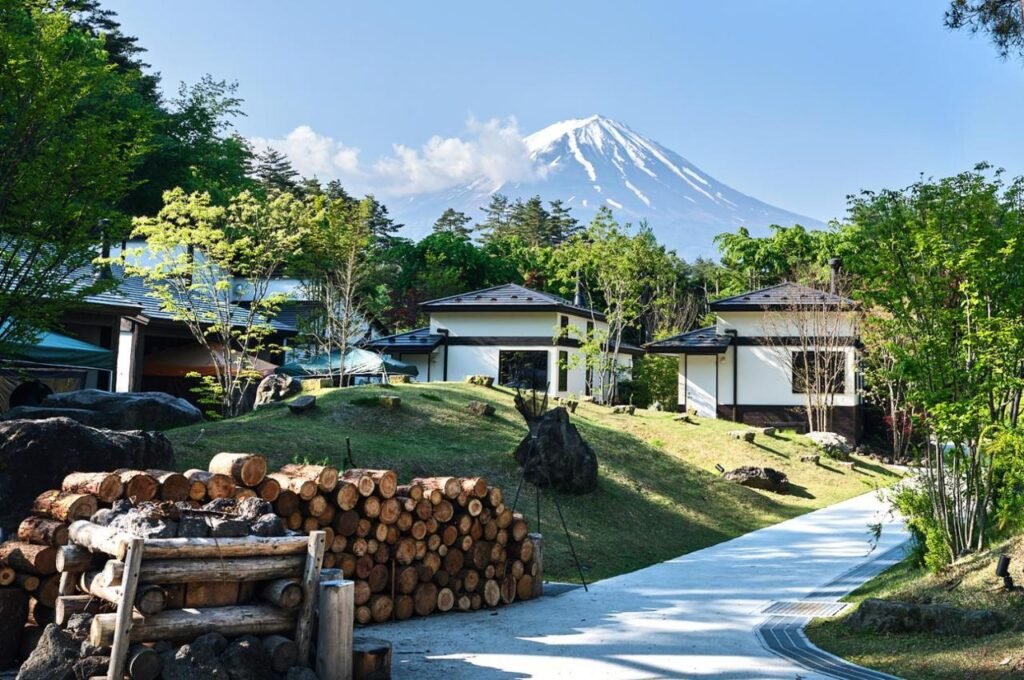
As mentioned above, during your night climb of Mount Fuji , you have the option of sleeping in one of the many intermediate huts located at the stations. This option will make the climb easier by splitting the journey into two days to avoid climbing all at once or at night. The huts have bunk beds, toilets, showers (for a fee), and food (very basic). Facilities vary from hut to hut, and it is recommended to book in advance if you plan to spend the night in a hut (especially during the summer).
The price of a night in a mountain hut on Mount Fuji varies depending on the location and facilities of each hut, but generally ranges between €100 and €400 for 1 night. Some huts also offer an hourly rate if you want to rest for a few hours during the climb.
AVAILABLE MOUNTAIN HUTS NEAR MOUNT FUJI
ALSO READ: Glamping Near Tokyo: 8 Scenic Spots with Mt. Fuji Views
Equipment to bring for climbing Mount Fuji
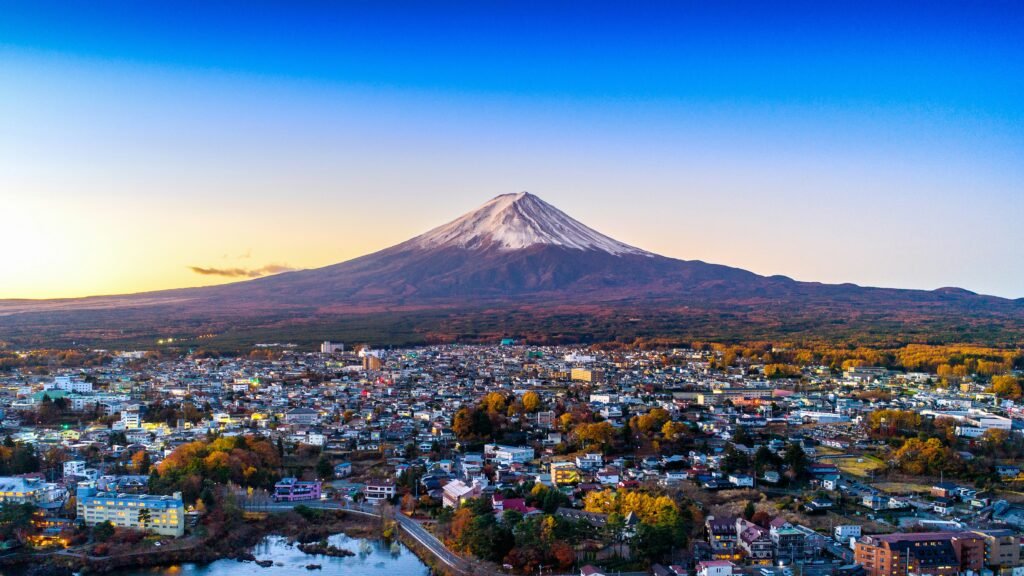
When climbing Mount Fuji , it is essential to be properly equipped to cope with changing mountain conditions, especially weather conditions that can be challenging as you approach the summit.
- Clothing : Dress in layers so you can adjust your outfit according to the temperature; you should bring warm clothes, waterproof clothes and a change of clothes: trousers, hat, gloves, thick socks, etc. At the summit, temperatures can drop below 0°C, even in summer, and winds often bring the thermometer even lower, so plan accordingly!
- Hiking Boots : Wear sturdy hiking boots with good grip to cope with the rocky and steep sections of the trail, as some sections are quite steep and the ground can be quite crumbly.
- Hiking Poles : Walking poles are available for purchase at the start of each trail; they can help you stabilize your progress, especially on steeper sections.
- Headlamp : This will be essential if you decide to climb Mount Fuji or descend after sunset.
- Food and Water : Bring enough energy snacks and water to stay hydrated throughout your climb, although you can refuel at the shops located at the various stations.
- Sunscreen and sunglasses : essential for the descent even if you are climbing at night because the sun is very strong very early!
- Backpack : Choose a comfortable, lightweight backpack to carry your gear, food, water, and extra clothing.
When is the best time to climb Mount Fuji?

The ideal time to climb Mount Fuji is generally from July to early September , which is the summer season in Japan. During this time, the weather conditions are milder, but beware of the crowds, which are much larger! Here are some points to consider regarding the climbing season.
The ideal time to climb Mount Fuji remains the summer season: the snow has melted and Mount Fuji is generally clear, offering spectacular panoramic views of Tokyo Bay and its surroundings. Be careful though, as weather conditions can still be changeable at altitude, so be prepared for wind, rain, or even very cold temperatures at the summit!
In terms of crowds, however, expect to see people and even some traffic jams during the climb if you do it during the summer season. The trails can be crowded, especially on the Yoshida Trail which is the most popular. If you prefer a less crowded experience, consider climbing outside the summer period. To escape the crowds as best you can, it is advisable to avoid weekends and especially the period around the Obon festival (mid-August). Before mid-July and after the beginning of September, you will have fewer people while still having good weather conditions.
Be careful not to stray too far outside the summer season, however, because outside the tourist season, climbing is strongly discouraged or even prohibited by the authorities , due to too many accidents (even among seasoned climbers). Snow, poor visibility and the cold are important risk factors to take into account!
Climbing Mount Fuji Essential Tips
Climbing Mount Fuji is generally considered accessible to hikers of all levels, and we saw people of all ages during our night climb. Keep in mind, however, that the altitude (cold and lack of oxygen) can create difficulties for some people, and the difficulty of the climb should not be overlooked. Here is a summary of our tips for successfully climbing Mount Fuji :
- Be aware of altitude and weather conditions
- Choose the right time to climb, avoiding busy times (weekends and Obon festival) without straying too far from the period open for climbing (from July to mid-September)
- Plan for several layers of clothing for all weather and temperatures
- Plan the climb in advance if you want to sleep in a refuge, especially during the summer when places are scarce.
- 40 Best Japanese Brands That Define Style, Innovation, and Cool (2025)

- Top 14 Japanese Streetwear Brands That Are Redefining Cool Right Now (2025)

- 15 Tokyo Best Bars You’ll Love [2025 Guide]
![15 Tokyo Best Bars You’ll Love [2025 Guide] 3 Tokyo Best Bars](https://tokyocandies.com/wp-content/uploads/2023/08/image-15-150x150.jpg)
- 16 Best Anime and Manga Stores in Tokyo: Otaku Shopping Guide for Every Fan (2025)

- What to Do in Yokohama with kids: 20+ Must-See Spots & Experiences (2025)

